12 trends set to shape 2022 for in-house legal

Andrew Mellett
Founder & Executive Director
“There are decades where nothing happens; and there are weeks where decades happen” — Vladimir Ilyich Lenin.
One might think after the turbulence of the past two years it would be naive to make predictions about the year ahead. As the saying goes ‘forecasting is difficult; particularly when forecasting the future’.
However while ‘volatility’ was the most dominant trend, the truth is that the extraordinary events of the past two years have only accelerated the systemic shifts we predicted were reshaping in-house Legal Functions back in 2019. These trends have now become so entrenched that they form the top priorities for many legal leaders.
Volatility was perhaps the most dominant theme of the past two years. Yet this only accelerated existing trends while initiating new ones.
Unquestionably, in this rapidly changing operating environment it is those executives who can best predict and respond to the future that will position their organisations for prosperity.
12 trends set to shape the in-house Legal industry in 2022
1. The Agile Legal Function
The only true way to combat ‘volatility’ is to move to a more agile model. Progressive GCs will move away from siloed, static and slow modes of operation to more dynamic, automated and rapid models of legal delivery. This cuts across every aspect of ‘the legal function of the future’ from organisational design, competency development, use of technology, resource allocation and law firm management. Business is going ‘agile’ - legal leaders will be forced to follow.
2. The broken chain
As a result of Covid, loose monetary policy and dispersed supply chains, businesses will continue to experience great disruption to their supply chains which - when coupled with extraordinarily high yet asymmetric inflation - will present unprecedented supply chain risks to businesses. Legal functions will need to be prepared to rapidly recontract, and shift from a focus on achieving ‘certainty’ when contracting to building in ‘uncertainty’ and ‘resilience’ into their agreements.
3. The servant and the hangman
Due to GC’s history in private practice they have often positioned themselves as ‘advisors’ and ‘servants’ to the exec and board. This was fine within the bounds of the traditional ‘business facilitation’ legal mandate. We often hear GCs say 'this is the businesses risk, we are just advisors', and in principle they are right. However, expectations have shifted over the last 10 years.
We now expect businesses to ‘do no wrong’, embrace ESG, protect and manage our data, be diverse, and comply with all laws globally. This is an impossible mandate, and one which most legal functions aren’t prepared to manage. Recent history has taught us that when something invariably goes wrong there must be someone to blame; and the hangman comes swiftly and (ironically) politics trumps justice.
4. Racing to catch the digital train
As the Microsoft CEO said: ‘we have experienced a decade of digitalisation in a month’. ‘Remote’ drove organisations to reconsider all processes and move them onto digital platforms. It exposed Legal’s lack of automation, collaboration and system of record for legal tasks. When 80% of the enterprise value of the S&P500 sits in Intellectual Property, CEOs no-longer accept excuses from executives who don’t have the tools to adequately secure and manage them. Gartner forecasts that spend on Legal Tech will increase 3x in the next four years. Even after this investment Legal functions will have less than 10% of the productivity tools of peers in adjacent functions.
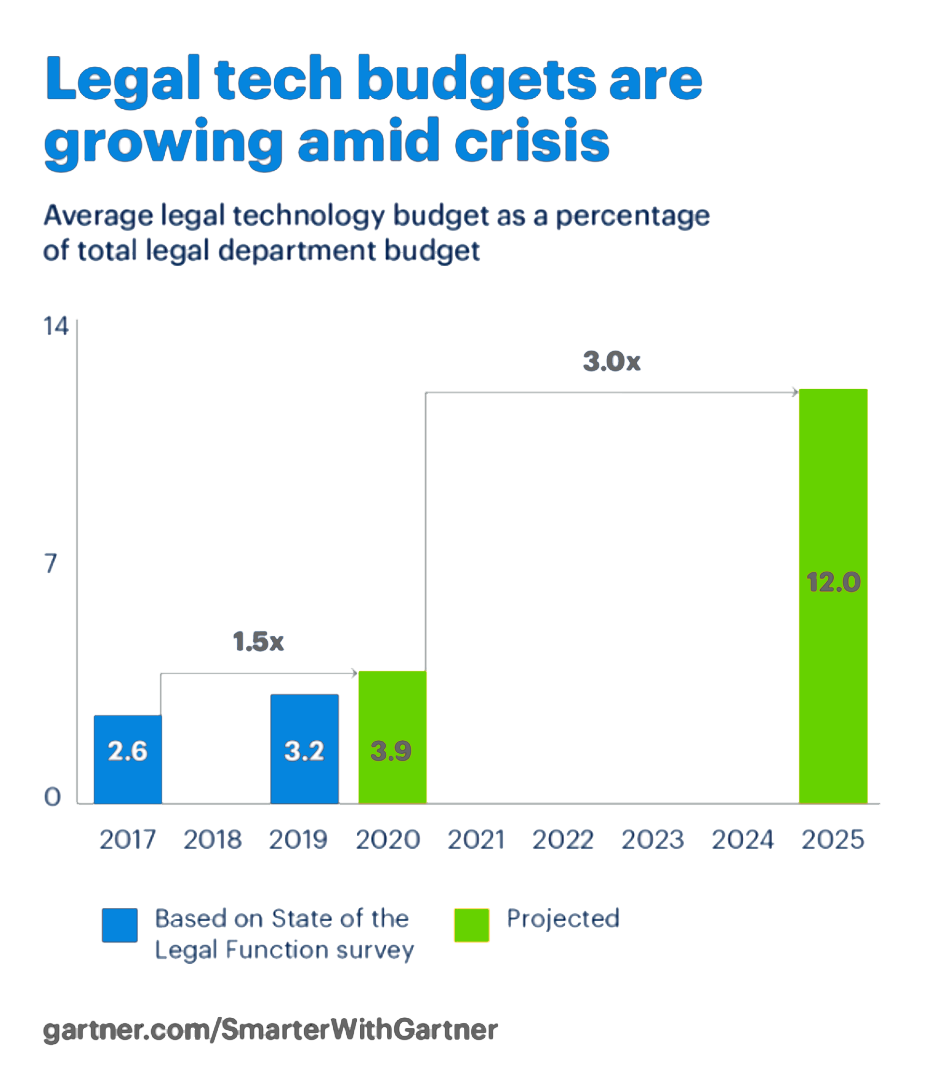
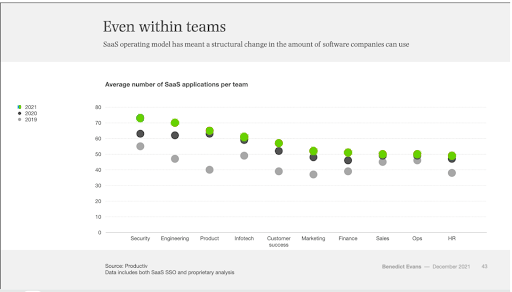
5. Between a rock and a law firm
People have been forecasting the death of ‘the billable hour’ and with it Big Law for decades. However, when supply exceeds demand prices go up. We can expect the ongoing increase in billable hours to accelerate next year - as tight labour markets cap supply on professional services firms. This will put GC’s desire to do ‘more for less’ between ‘the rock’ of accelerating client demand - and a law firm.
6. The end of ‘innovation’ within Big Law
Legal leaders have started to recognise that Big Law’s promises of innovation were largely funded out of the marketing budget, not a (non-existent) ‘R&D budget’. Likewise, Law Firm Partners have recognised that the highest ROI investment they can make is to sell another hour. This is the classic example of Clayton Christenson’s ‘innovators dilemma’. Or as Charlie Munger said, ‘You show me the incentive. I will show you the behaviour’.
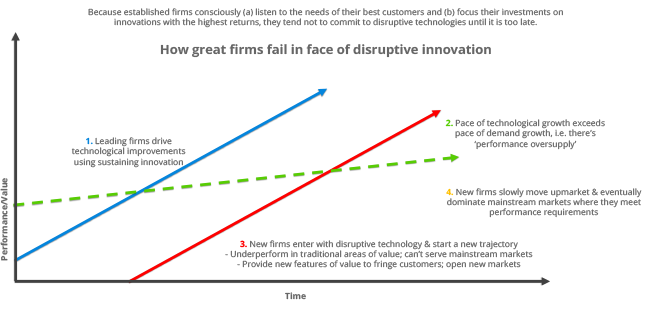
7. The acceptance of risk
The root cause of all of Legal’s ills and the ultimate answer to the vexing question of how to get ‘more-for-less’ is to shift the legal function’s understanding, alignment and tolerance of risk. The functions of the future will recognise they can’t protect the business from all risks - and trying to is strangling the business. They will be more agile in their response to volatile risk environments and will centre their efforts on areas of low-risk resilience. Read more in our article on The Future of Risk Management.
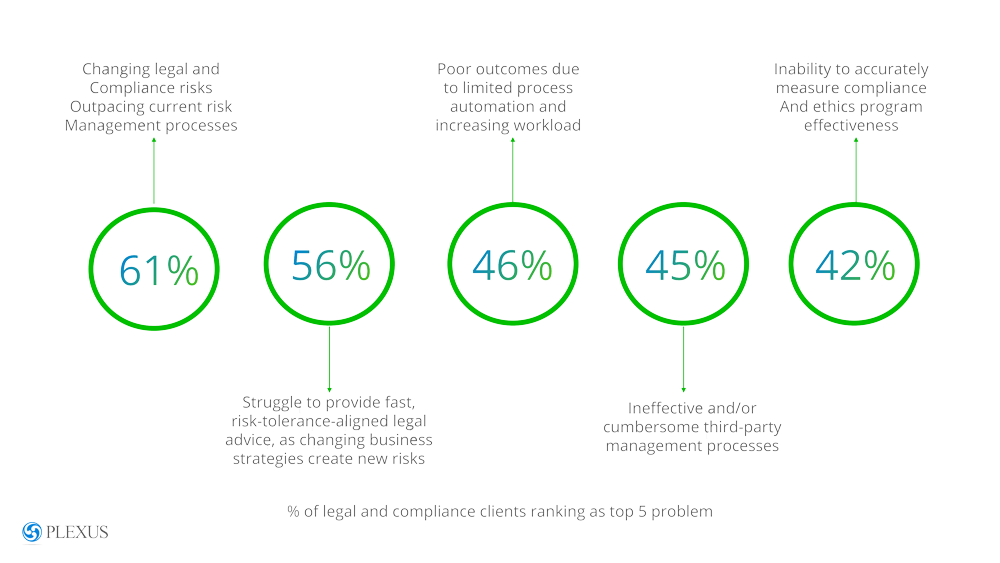
8. Tight talent...and ‘The Great Resignation’
The Pandemic accelerated the change in the role work plays in people’s lives - from the hard-working ethos of the post-war Baby Boomers to the new age thinking of the Millennials. As a result, turnover will continue to rise in the Western World, productivity will drop, and tight talent markets will be here to stay. As GCs grapple with this, alongside increasing law firms rates, they will increasingly turn to automation, different ways of working and offshoring.
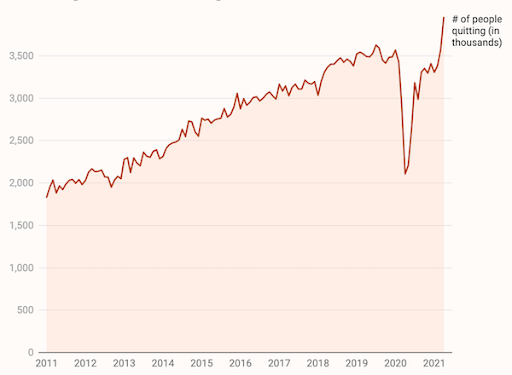
9. The move to global distributed working
Where once ‘offshoring’ involved engaging an LPO to manage large chunks of work (which was only relevant to large functions) progressive GCs will move to ‘distributed teams’. An enormous opportunity presents itself when people aren’t required to work from head offices. Now Legal Leaders can hire great people in smaller regional cities or lower-cost locations around the world.
10. AI will start to show promise
This somewhat contradicts our assertion four years ago (which held true) that Legal A.I ‘is high on artificial and low on intelligence’. However, Legal A.I is starting to crawl out of what Gartner calls ‘the trough of disillusionment. As we said then, ‘in the short term A.I will disappoint, in the long term it will blow you away’. It is still not the first investment we would advise our clients to make...but it’s starting to show promise.
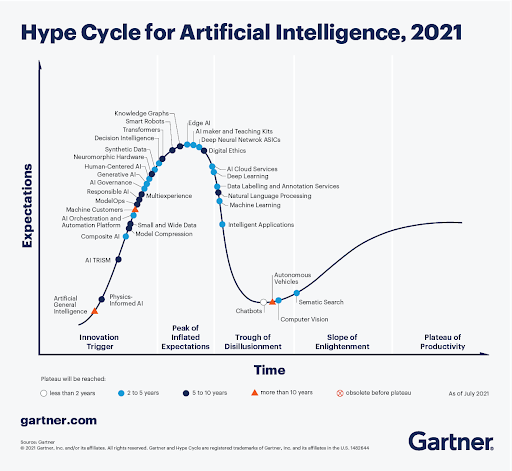
11. Standardisation and best practice
Lawyers have long been criticised for indexing on style over substance. Now there is recognition that the world would be a better place if we focused on ‘interoperability’ or standardisation of contracts. Businesses don’t want contracts, they want deals done. Moves such as One NDA (which we have automated on Plexus Gateway) and Syke’s partnership with WCC to produce best practice standardised agreements are just the first of many such initiatives to take friction out of contracting.
12. GC turn-over will continue to rise
Over the last five years GC turn-over has risen 65%. Statistically speaking, ‘ex-Big Law Partner’ is being replaced by a younger, more innovative and largely female breed of legal leaders. These GCs often come from other legal functions - and bring with them best practices and learnings on the operation of an in-house team.
To wrap
There are threats and opportunities embedded in all of these trends. Our experience has been that those leaders who embrace change, move to a more agile, automated, flexible and digital future will drive immense competitive advantage for their organisations.
When 80% of the Enterprise Value of the S&P 500 sits within intangible assets that are generated, managed and protected by legal tasks it is an organisation's ability to rapidly create and manage these tasks that define its comparative advantage.
The world's top GCs work with Plexus
As the global economy moves faster and becomes increasingly volatile, organisations must radically evolve their operating models to more dynamically identify and respond to opportunities and threats. Plexus helps leading GCs shift their organisational design, evolve their talent competencies and digitise their functions to deliver faster, most cost-effective and more agile legal support.
Request a call-back
One of our consultants will be in touch ASAP to answer your questions and determine your requirements.
Want to speak to someone instead? Call us on 1300 983 907
Thank you
One of our consultants will reach out to you shortly.
Related Content
We use cookies on this site to enhance your user experience and improve our services. By using our website, we assume you're ok with this. View our privacy policy for details.
Get your free eBook!
Modernise your legal function with the Digital Transformation Guide for General Counsels.
Hooray!
The eBook is on its way to your inbox. You can also download via the link below.
Download now